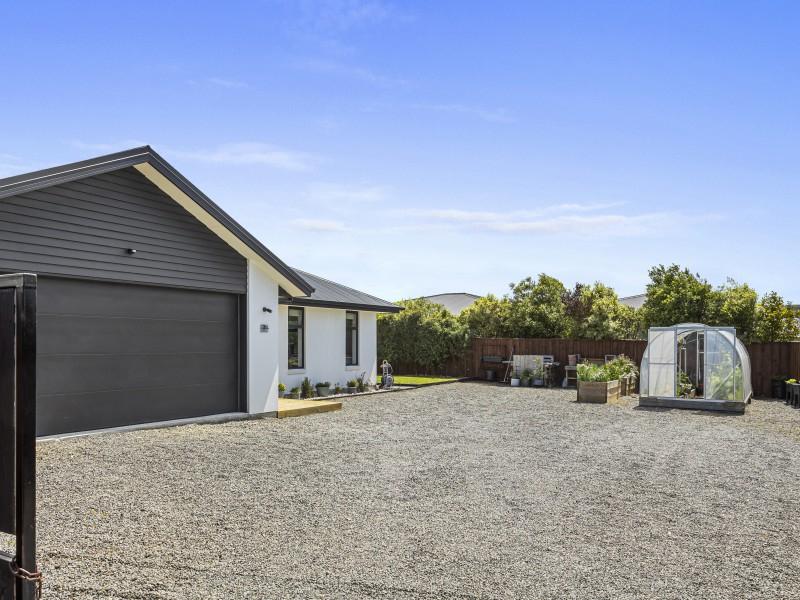Residents’ group opposes new Canterbury community board
By David Hill, Local Democracy Reporter
The fate of a proposed community board in North Canterbury will be decided by the Local Government Commission.
Eleven objections were received on the Hurunui District Council’s decision to create a community board for its south ward, which includes Amberley, at next year’s local government election.
Councillors who supported said it was ‘‘more democratic’’ and would better represent the south ward's growing population.
The Amberley District Residents’ Association is among the eleven objectors. Association chairperson Roy Myers said there was ‘‘no evidence’’ to support the change.
‘‘I can’t see any advantage whatsoever with an elected community board of five members who are paid by a targeted rate of $20,’’ Mr Myers said.
‘‘I think it is going to reduce representation.’’
He said under existing structure, committee members were accountable to the group they represented, but he questioned how the board members would be accountable.
‘‘The south ward has quite a diverse character. You have the urban part, the rural part and the beach communities.’’
Councillors voted in favour of replacing its south ward committee with an elected community board in June, following a representation review.
This was despite opposition from residents’ groups, with 14 of the 22 submissions opposed to the change.
The proposed community board would have five members elected at large, plus the four ward councillors and the mayor.
The south ward committee comprises nine community members elected at its first meeting in a council term, plus the four ward councillors and the mayor.
Community members include representatives from residents’ associations, the Amberley Reserves Advisory Group, the Hurunui Youth Council and three independent members.
South ward committee chairperson Jo Hassall said she looked forward to hearing the Local Government Commission’s decision.
‘‘I do like the fact it is being taken to a separate person, who will look at it independently.
‘‘It has gone through the right process and whatever decision is made is final.’’
The Local Government Commission is an independent body that can make decisions on the structure of local government.
South ward councillor Vanessa McPherson was among those who voted in favour of establishing the community board.
She said it would be ‘‘more democratic’’ as elected board members would be accountable to the whole community and not just to the groups they represented.
‘‘We are looking at the population growth in Amberley and I think moving forward the south ward needs and deserves democratic representation that will support that growth.
‘‘I know there are some associations and groups who feel they will lose their voice, but councillors will still have direct links with those groups.’’
The residents’ associations will also be able to make deputations to the community board.
Fellow south ward councillor Pauline White voted against establishing a south ward community board.
She said the 11 appeals was "another thread in a thorough representation review process".
"The community is continuing to engage, and this is evidence of their vested interest in representation to fit the current needs of the south ward."
The Local Government Commission will make its determination by April 10.
■ LDR is local body journalism co-funded by RNZ and NZ On Air.
⚠️ DOGS DIE IN HOT CARS. If you love them, don't leave them. ⚠️
It's a message we share time and time again, and this year, we're calling on you to help us spread that message further.
Did you know that calls to SPCA about dogs left inside hot cars made up a whopping 11% of all welfare calls last summer? This is a completely preventable issue, and one which is causing hundreds of dogs (often loved pets) to suffer.
Here are some quick facts to share with the dog owners in your life:
👉 The temperature inside a car can heat to over 50°C in less than 15 minutes.
👉 Parking in the shade and cracking windows does little to help on a warm day. Dogs rely on panting to keep cool, which they can't do in a hot car.
👉 This puts dogs at a high risk of heatstroke - a serious condition for dogs, with a mortality rate between 39%-50%.
👉 It is an offence under the Animal Welfare Act to leave a dog in a hot vehicle if they are showing signs of heat stress. You can be fined, and prosecuted.
SPCA has created downloadable resources to help you spread the message even further. Posters, a flyer, and a social media tile can be downloaded from our website here: www.spca.nz...
We encourage you to use these - and ask your local businesses to display the posters if they can. Flyers can be kept in your car and handed out as needed.
This is a community problem, and one we cannot solve alone. Help us to prevent more tragedies this summer by sharing this post.
On behalf of the animals - thank you ❤️

Would you like a free copy of our February 2025 issue?
Kia ora neighbours. We give away free copies to readers whose recipes are used in our magazine. We're still on the hunt for tomato recipes, so send your family's favourite way to use up your homegrown harvest, to: mailbox@nzgardener.co.nz. If we use it in the mag, you will receive a free copy of the mag

On the range
Venetian plaster finishes are on-trend at the moment, so why not recreate this look at home and cover that unsightly rangehood at the same time? Find out how to create your own with Resene Sandtex and these easy step by step instructions.








 Loading…
Loading…





